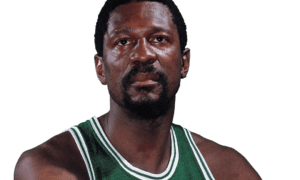Ernie McCray
EDITOR’S NOTE: Former Tucson High School and University of Arizona basketball standout Ernie McCray is a legendary figure to Tucsonans and Wildcat fans. McCray, who holds the Wildcats’ scoring record with 46 points on Feb. 6, 1960, against Cal State-Los Angeles, is the first African-American basketball player to graduate from Arizona. McCray, who now resides in San Diego, earned degrees in physical education and elementary education at Arizona. He is a longtime educator, actor and activist in community affairs in the San Diego-area. He wrote a blog for TucsonCitizen.com before the site ceased current-events operations last year. He agreed to continue offering his opinion and insight with AllSportsTucson.com about Arizona Wildcats athletics. McCray also writes blogs for SanDiegoFreePress.org.
[rps-paypal]
[ezcol_1half id=”” class=”” style=””]
Martin Luther King. A loving man with the loveliest of dreams. After seeing “Selma,” which told the story of that chapter in the Civil Rights Movement powerfully well, I just had to write something about this dear man.
I didn’t know what I wanted to say until I happened upon a caricature that captured the very essence of how I often see him in my mind’s eye, as I think of him every now and then. How can I not in this world we live in?
The pose he struck in the portrait made me wonder what was going on in his head and based on what my friend, *Rabbi Ben Kamin, recently had to say about him in an examiner.com essay, he could have been thinking about a range of things.
He could have been reflecting on: his many stays in prison or his struggles to keep the pounds off or the need for him to cut down on the number of cigarettes he smoked per day; how devastating his last bout of depression had been or how physically exhausted he always was; an opening line to use the next time he sat down in the White House with LBJ; the many threats against his safety and his general wellbeing that was constantly waged by common thugs and the head of the FBI; the gravity of being away from his wife and children so much of the time and not having personal wealth…
Who knows? But when I look at that portrait of Martin’s brown (with a touch of cream) face, I see him as Kamin does, for what he was: a human being. A man who taught us how to love and dream.
And I can’t help but hope that, when the food has digested from the many breakfasts in his name and the noise has dimmed from the marches and parades, and we begin to recover from scenes in the screenplay, that we truly honor him and see to it that he didn’t die in vain.
There were many aspects in his dream to which we could connect and promote and his wishes for a non-violent society, particularly, stands tall in my mind right now.
[/ezcol_1half]
[ezcol_1half_end id=”” class=”” style=””]
Ernie McCray during his Arizona playing days. His 46 points in a 1960 game remains a school record (University of Arizona photo)
[/ezcol_1half_end]

(DonkeyHotey/Flickr Creative Commons)
[ezcol_1half id=”” class=”” style=””]
Martin left us with Six Principles of Non-Violence, and I don’t want to list them in textbook fashion, as principle one, and two, and so on, but how I see them in their totality, how I see us adhering to them.
He saw these guide-lights for bringing about political and social change as a way of life for courageous people. So we must stand tall and determined as we take on the challenges of creating a better world.
He saw non-violence as a means to defeating injustice, “not people,” and as a way to seek friendship and understanding. So we need to be more tolerant and accepting and more respectful of each other’s ideas and find ways to work in harmony to change our world.
He felt that suffering can educate and transform, that non-violence chooses love instead of hate, that the universe is on the side of justice. So we must always learn from what befalls us in life in as peaceful manner as is possible, knowing in our hearts, and in our faith that right is more powerful than wrong, that without justice there can be no peace, no better world.
[/ezcol_1half]
[ezcol_1half_end id=”” class=”” style=””]
[/ezcol_1half_end]
So where do we begin if we want to truly honor this great man, Dr. Martin Luther King, Jr.? We certainly could protest the wars, the torturing, and the drones, as he vehemently opposed all armed conflicts.
But I’d like to keep it a bit closer to home, right now, to something we can take a serious look at, immediately, utilizing the strategies of non-violent action that Martin would use: the mass incarceration of people of color that, too often, relegates them to a lifetime of second-class citizenship.
According to Martin’s plans of action, we would have to, first of all, learn all we can about the problem. And with that knowledge we would need to bring others up-to-date and pursue ways, with all who are willing to play a role, to solve this harmful worrisome societal nightmare where we see someone’s loved ones, on our television sets, as we sit on our favorite chairs in the comfort of our homes, slaughtered on the streets – by those who pose as servers and protectors.
We have to: talk to both sides in such matters, those in trouble and those who are contributing to the problem; take to the streets and write letters and circulate petitions so that we can show, both those who agree with us and those who don’t, the benefits of changing the situation.
It’s vital to the wellbeing of everyone in our country that we get on this. Martin said to the gathering at Lincoln Memorial on that historical day of his “I Have a Dream” speech, “Now is the time to lift our nation from the quicksand of racial injustice to the solid rock of brotherhood. Now is the time to make justice a reality for all of God’s children.”
This sentiment holds true today, some 51 years later, because there’s still much to do before we can all realize a reality where we can truly say that we are:
“Free at Last!”
There can be no greater honor of a great man, or woman, than seeing that their hopes and dreams for a better world come true.
Afterthought: See the movie, “Selma,” as it gets at the heart of how important it is for our citizens to be able to vote. That’s what the march from Selma to Montgomery was all about, suffrage. But Jim Clark, a sheriff bent on keeping alive the old ways of the South saw to it that they were brutally beaten for daring to ask for the simple right to choose people or propositions and ideas that represented their aspirations as human beings, a right that was theirs anyway. It just hadn’t been honored due to ridiculous legal barriers at state and local levels. After President Lyndon B. Johnson signed the Voting Rights Act of 1965, people who hadn’t been able to vote, voted Jim Clark out of office. Who said that voting doesn’t do any good?
Sadly, in our country, so many years after such an historic struggle, not enough of us go to the polls on election day. So we have to continually organize “get out the vote” campaigns and, in particular, we need to let ex-convicts, who are struggling to fit in society again, know (because many don’t know) that in Arizona their voting rights are restored automatically upon completion of sentence, including prison, parole, and probation.
That is all.






























